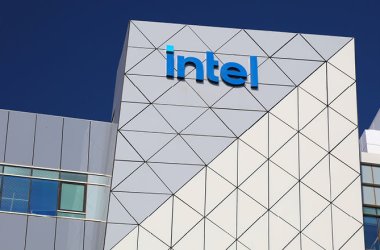 Calxeda recently announced its EnergyCore, an integrated server chip with an ARM processor that could provide the groundwork for ARM to challenge Intel’s dominance in the server market.
Calxeda recently announced its EnergyCore, an integrated server chip with an ARM processor that could provide the groundwork for ARM to challenge Intel’s dominance in the server market.
The quad-core EnergyCore chip is being used in HP’s first ARM server design, which was announced yesterday and is part of HP’s Redstone Server Development Platform. Servers based on the design will be released in the first half of next year, but initially be available only for testing and evaluation purposes, HP said.
Calxeda’s chip includes an ARM processor and consumes as little as 1.5 watts of power. HP’s ARM-based server design packs 288 Calxeda chips into a 4U rack-mount server with shared power, cooling and management infrastructure, the company said.
“Calxeda doesn’t build servers, but provides the chip and reference boards to server makers,” said Karl Freund, VP of marketing at Calxeda.
“We have a half-dozen OEMs who are in various stages of design and consideration,” Freund said.
The EnergyCore is a single chip with a Cortex-A9 ARM processor running between 1.1GHz and 1.4GHz. The chip includes 4MB of cache, an 80-Gigabit fabric switch and a management engine for power optimisation, according to Freund. Servers with the chip, 4GB of memory and a large-capacity solid-state drive draw 5 watts of power. Besides using a low-power ARM processor, Calxeda has cut down chip power consumption by integrating key server components, the company said.
“Servers can be designed in a way so chips can be deployed to work in a mesh, grid, or tree structures. The chip’s structural flexibility can scale performance on distributed workloads, while maintaining fault tolerance and balancing network throughput,” Calxeda said.
ARM licenses processor designs to chip makers like Nvidia, Qualcomm and Texas Instruments. ARM processors are in most smartphones and tablets today, but the company has virtually no presence in the server market. However, there is a growing interest in bringing low-power ARM processors to servers as companies look to cut electricity bills.
Most servers run on Intel’s Xeon and AMD’s Opteron chips, and analysts have said that ARM processors may lack the raw performance and reliability of traditional server chips. But analysts said that a large group of lightweight ARM cores could deliver better performance-per-watt on specific workloads than conventional server chips. For example, ARM processors would be more efficient at processing volumes of Web transactions while drawing less power.
Specific Web server and Hadoop workloads are designed to fit on Calxeda servers, added Rich Fichera, an analyst at Forrester Research.
“At its core … the new HP business unit and Calxeda’s server technology is about improving the efficiency of web and cloud workloads, and promises improvements in excess of 90% in power efficiency and similar improvements in physical density compared to current x86 solutions,” Fichera said.
“Calxeda’s server chip is a wake-up call for Intel and AMD, which have been slow at meeting low-power server requirements,” Fichera said.
“Will this destroy Intel and AMD as server vendors? The thought is absolute nonsense. Aside from the large number of workloads that will not particularly benefit from the ARM model, both will respond with further focused R&D to continue to improve their power efficiency, leveraging their strengths in software compatibility and in Intel’s case, their market dominance,” Fichera said.
Intel is already pushing its low-power Atom chips in servers. SeaMicro’s SM10000-HD server packs 384 dual-core Intel Atom processors, and is designed for Web transactions. AMD has said it was looking into putting its low-power Bobcat CPUs on servers.
Some challenges for ARM in the server market include lack of compatibility for 64-bit applications, as current ARM processors are only 32-bit. Also, most of the code in servers is written around x86 architecture, and companies may hesitate in implementing a separate ARM code base, analysts said.
Despite challenges, Calxeda is going ahead with future server chip plans around ARM.
“We will follow the ARM road map and will bring new products to market every 18 to 24 months,” Freund said.
ARM’s next processor design is Cortex-A15, which will succeed the Cortex-A9. Devices from smartphones to servers will use Cortex-A15, and devices are expected to hit the market late next year.
ARM last week also announced its new ARMv8 architecture, which could bring the first 64-bit ARM processors to market.





